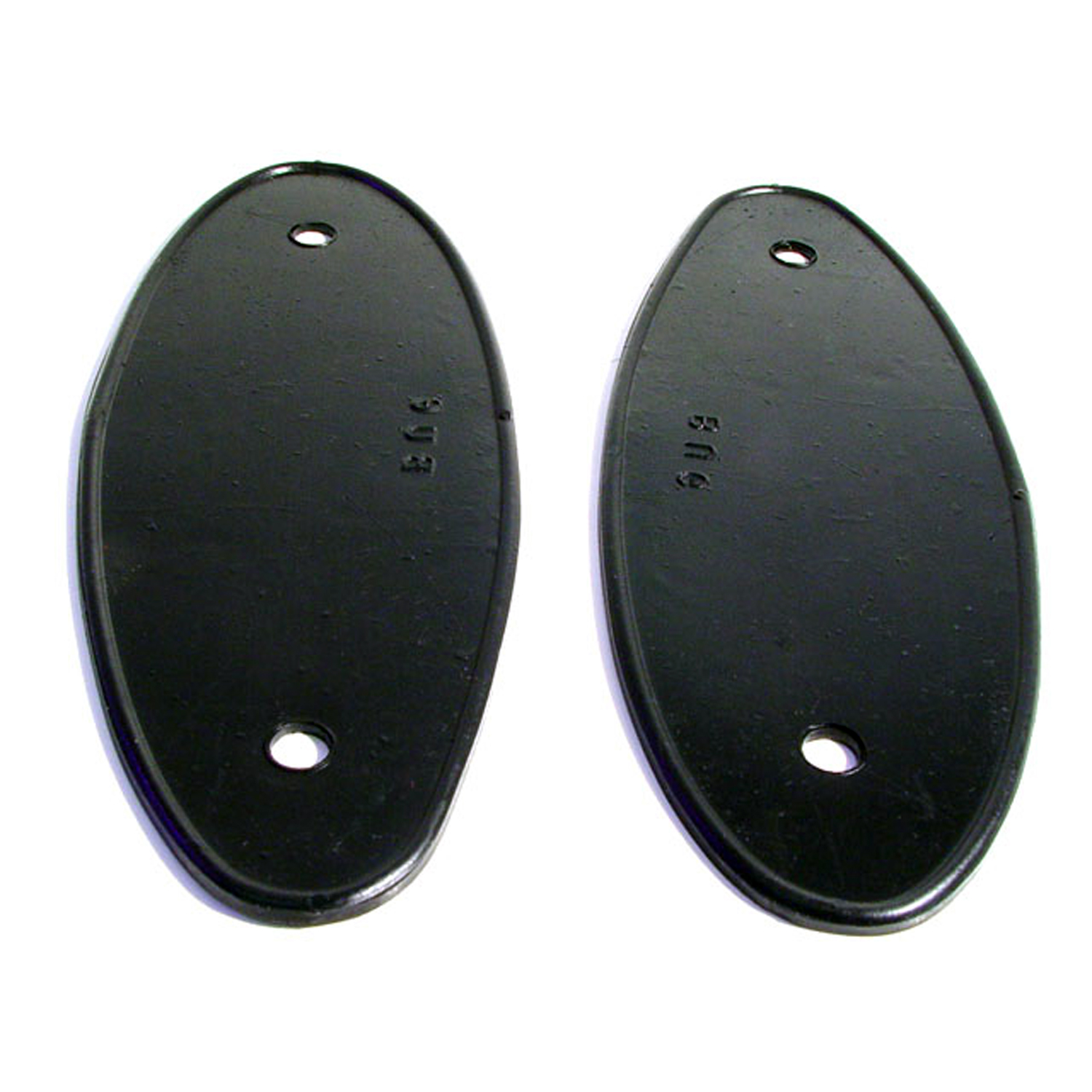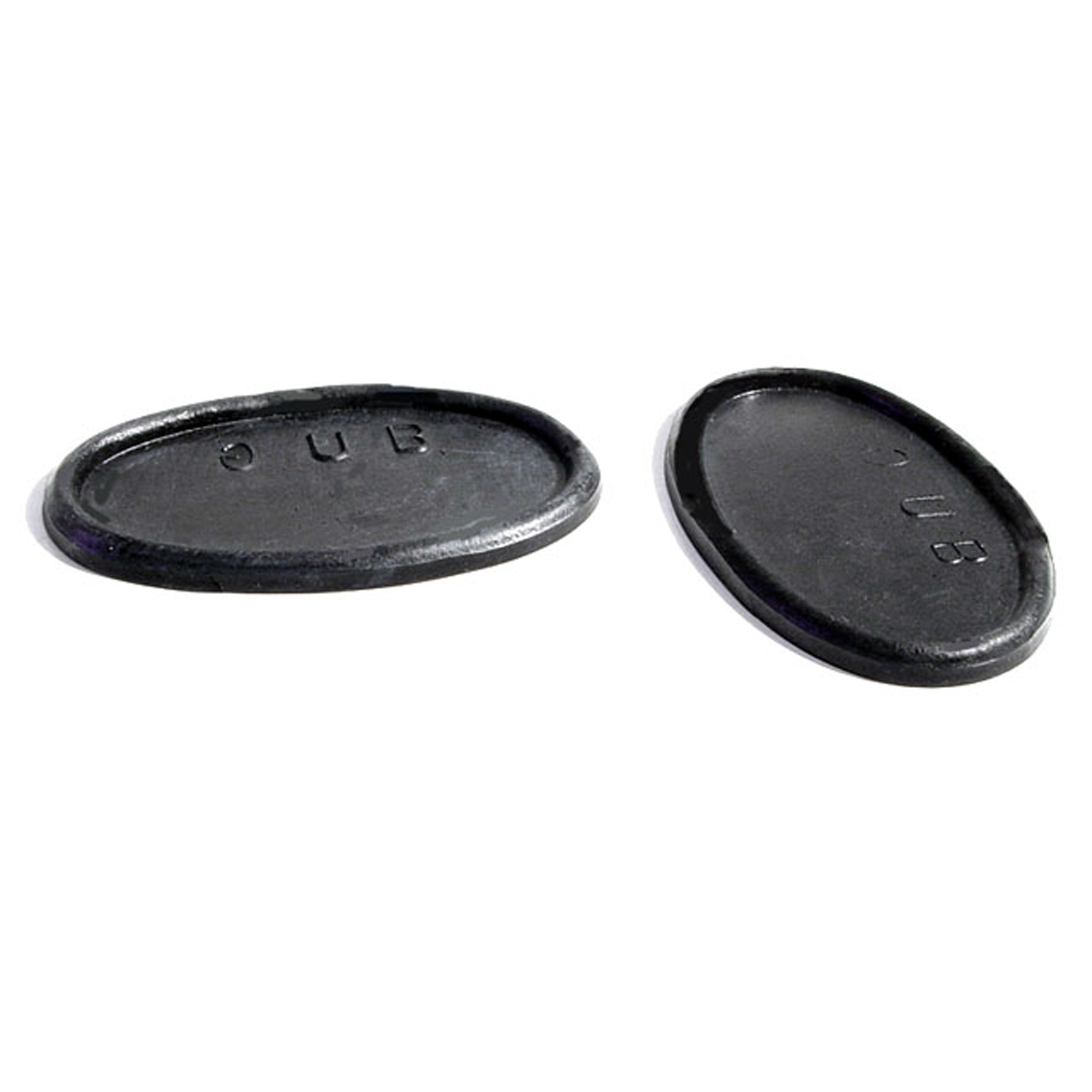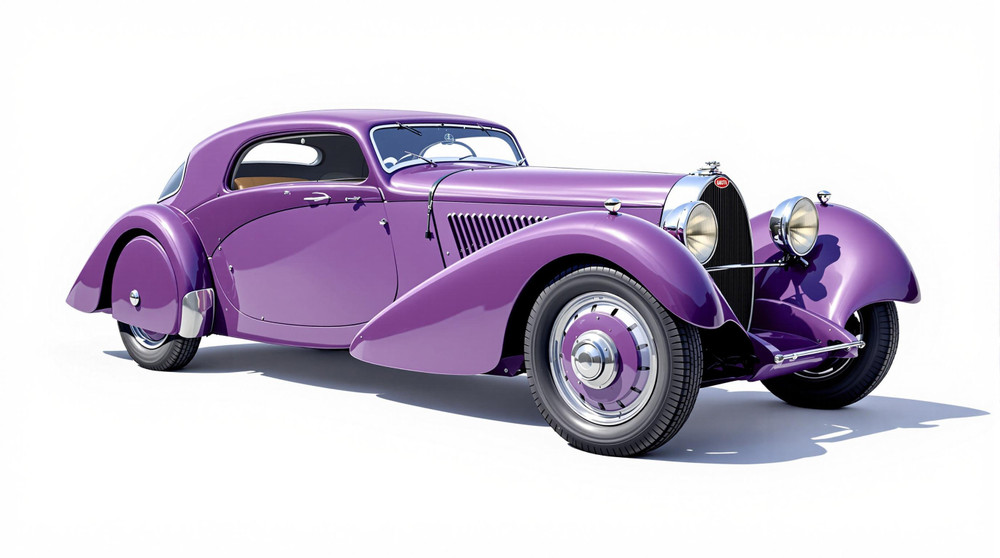Image of 1931 Bugatti Type 50, Note: These illustrations use artistic license and may differ from actual historical models.
Performance Metrics
Fundamental Metrics
Emotional Appeal
MMP Rating
| Engine Specifications | |
|---|---|
| Engine: | Straight 8 |
| Displacement: | 4972 cc |
| Horsepower: | 200 HP |
| Torque: | Not available |
| Compression Ratio: | Not available |
| Ignition System: | Magneto ignition |
| Cooling System: | Water-cooled |
| Performance Specifications | |
| 0-60 Time: | Not available |
| 1/4 Mile Time: | Not available |
| Top Speed: | 100 mph |
| Transmission and Drive | |
| Drive Type: | Rear-wheel drive |
| Transmission Type: | 4-speed manual |
| Fuel and Efficiency | |
| Fuel System Type: | Carburetor |
| MPG: | Not available |
| Dimensions and Brakes | |
| Brakes: | Mechanical drum brakes |
| Wheelbase: | 130 inches |
| Weight: | 2300 lbs |
Note: Specifications for classic cars are given to the best of our ability, considering the limited and variant data available.
Unveiling the Grandeur of the 1931 Bugatti Type 50
The 1931 Bugatti Type 50 stands as a testament to the marriage of art and engineering, a symbol of pre-war luxury and performance. Born from the genius of Ettore Bugatti and his son Jean, this automobile emerged from Molsheim, France, as an embodiment of innovation and elegance. At a time when the world was caught between wars, the Type 50 was a beacon of hope for technological advancement and aesthetic beauty. It's worth noting that the Type 50 was one of the first road cars to feature an engine with dual overhead camshafts, showcasing Bugatti's commitment to pushing the boundaries of automotive design.
Design and Innovation
The exterior of the Type 50 is a visual feast, with lines that flow like water over pebbles in a stream. Its long bonnet houses a majestic straight-eight engine, while the sweeping fenders and low-slung body exude an air of sophistication. Inside, occupants are greeted with an opulence that only a Bugatti can offer: rich leather upholstery, polished wood trim, and bespoke gauges that are as much works of art as they are functional instruments. Technologically, it boasted a supercharged engine—a marvel at the time—delivering unprecedented power to its aristocratic clientele. The color palette ranged from deep blues to elegant blacks, with many owners opting for custom hues to suit their personal tastes. The most iconic body style was undoubtedly the coachbuilt coupe, with its distinctive two-tone paintwork and rakish profile.
Historical Significance
The Type 50's influence on automotive design cannot be overstated. Its engine design inspired future generations of performance vehicles, and its luxurious appointments set a new standard for grand touring cars. It was not merely a car but a rolling sculpture that commanded attention wherever it went. The Type 50's legacy is such that it remains a touchstone for designers and engineers alike.
Performance and Handling
With a top speed approaching 100 mph—a remarkable feat in its day—the Type 50's performance was nothing short of exhilarating. Its acceleration from 0-60 mph took place in mere seconds, propelling its elite drivers into an echelon of speed previously reserved for racing machines. On the road, it handled with grace and poise, absorbing imperfections while remaining composed through tight bends. The symphony of its engine was matched only by the sensation of sheer velocity it imparted upon its driver.
Ownership Experience
Owning a Type 50 was—and still is—a statement of taste and prestige. While some used it as a daily driver or show car, others entered their prized possessions into competitive racing events. Maintenance requires specialized knowledge due to its unique mechanical components; however, for those who could afford such luxury, reliability was seldom a concern. The experience of owning this vehicle is akin to being custodian to a piece of automotive history.
Fun Facts
The Type 50 has graced the garages of nobility and celebrities alike throughout its history. Although not known for breaking speed records, it set benchmarks in luxury and performance among its peers. Criticisms were few but often pointed toward its costliness and exclusivity—traits that have only amplified its desirability among collectors today.
Collector's Information
Today's value range for an original Bugatti Type 50 can be astronomical due to its rarity; estimates suggest fewer than 65 units were ever produced. As such, they seldom appear on the market, making each occurrence an event in itself. Over time, values have appreciated significantly as collectors vie to add this crown jewel to their collections—with auction prices reaching well into seven figures.
Conclusion
The 1931 Bugatti Type 50 is more than just an automobile; it is an enduring icon that represents the pinnacle of pre-war luxury and performance. As we reflect on its storied past and enduring legacy, we are reminded that some creations are timeless—transcending generations to inspire awe and admiration indefinitely.
1931 Bugatti Type 50 Catalog of Parts
 1931 Bugatti Type 50 Headlight Pads. 3" wide X 8-1/8" long. Pair-MP 337-AHeadlight Pads. 3" wide X 8-1/8" long. Pair
1931 Bugatti Type 50 Headlight Pads. 3" wide X 8-1/8" long. Pair-MP 337-AHeadlight Pads. 3" wide X 8-1/8" long. Pair 1931 Bugatti Type 50 Door Handle Pads. 1-3/8" wide X 2-1/4" long. Pair-MP 337-BDoor Handle Pads. 1-3/8" wide X 2-1/4" long. Pair
1931 Bugatti Type 50 Door Handle Pads. 1-3/8" wide X 2-1/4" long. Pair-MP 337-BDoor Handle Pads. 1-3/8" wide X 2-1/4" long. PairWhy Choose Metro?
For over 100 years, Metro Moulded Parts has been the pinnacle of quality in classic car restoration parts. Our commitment to precision and authenticity in every component ensures a perfect fit and an OEM-level appearance.
- Expert Craftsmanship & Quality: Each part is a testament to our dedication to reliability and perfection, crafted from original designs and thoroughly tested.
- Advanced Technology: We use cutting-edge techniques to create flawless, long-lasting parts that surpass others in performance.
- SuperSoft Sponge – The Ultimate Door Seal: Not only are our door seals 30% softer than competitors', but they're also guaranteed to never leak. They effectively reduce wind and road noise, enhancing your classic car's comfort and driving experience.
- Proudly American: Our parts are a product of American craftsmanship, made in the USA with a spirit of excellence and heritage.
- Unrivaled Warranty: We back our products with a 30-year industry-leading warranty, a testament to our confidence in their quality.
Join us in preserving the legacy of classic cars with parts that are crafted for perfection, not just made.

